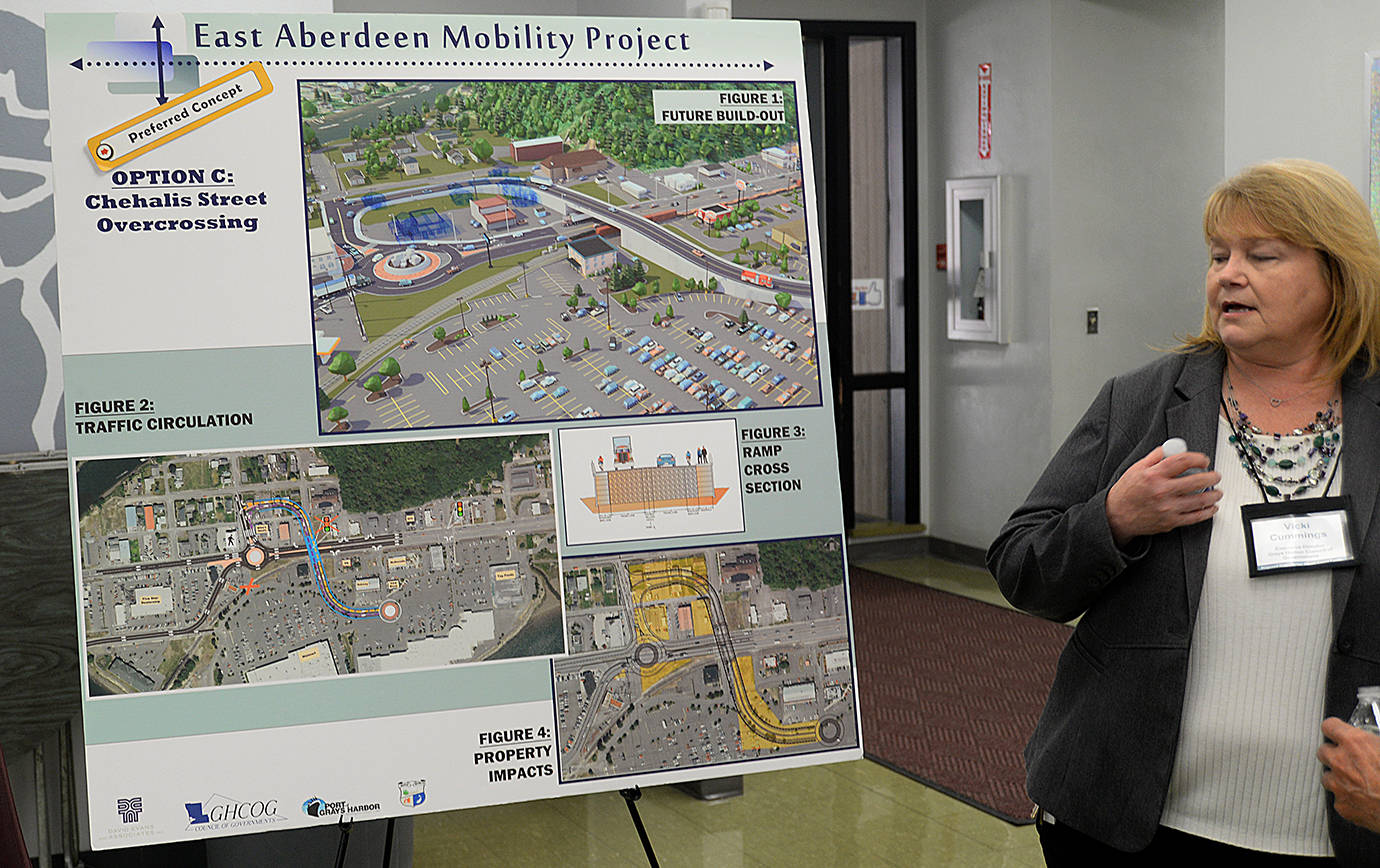BHP, the Australia-based company proposing a large potash storage and shipping facility at Terminal 3 at the Port of Grays Harbor, filed for a shorelines permit with the City of Hoquiam Friday. Sort of.
“Late Friday we received an email from (BHP’s) consulting firm with a website to download an electronic copy of their application, but until we receive a hard copy and the application fees the application is not deemed to have been submitted,” Hoquiam City Administrator Brian Shay said Tuesday.
The Terminal 3 facility could employ up to about 50 full time employees when operational, said BHP Manager of Corporate Affairs Ken Smith.
“We’re still finalizing our operations plans but we’re looking at between 40 or 50 full time employees,” he said. “And we are figuring we are going to be requiring services from time to time from local contractors and the like.”
At Monday’s City Council meeting, Shay submitted a report recommending the city hire a “qualified consultant” to review the shorelines permit application. This is the same process used when Contanda – then Westway – applied for a shorelines permit with the city when the company was considering a bulk crude oil storage and shipping site at their Port facility. On Monday the council approved the recommendation to hire a consultant unanimously.
As is common in major shorelines permit applications, Shay said the fee for the consultation will be paid for by BHP, not the city. When the consulting firm reviews the application it will provide the city with a draft recommended permit decision. The firm will have experienced analysts who can see if the application fits within local, state and federal environmental guidelines, added Shay.
When asked about Contanda’s crude oil project shorelines permit application, Shay said it was still active, but he quickly added that both Contanda and Renewable Energy Group — which has a bulk liquid storage operation next to Contanda — are both looking into potential expansion in projects that do not include crude oil.
He said the recent State Supreme Court decision regarding the Ocean Resources Management Act will make it tricky for a bulk liquid fuel facility of any kind to gain traction at the Port. That decision basically said any construction or operation of a crude oil facility on the shoreline violated the act, to the delight of a coalition of environmental groups and the Quinault Indian Nation, which sued to stop it, and to the dismay of supporters of the crude oil facility.
A council member asked Shay if he thought the proposed potash facility may fall under the restrictions of the Ocean Resources Management Act decision. Shay responded, “No.” Potash is a water-soluble naturally occurring compound, potassium chloride, that is used in high quality agricultural fertilizers.
At the beginning of the meeting, Port Public Affairs Manager Kayla Dunlap delivered the Port’s annual year in review. Afterward, she and Port Executive Director Gary Nelson fielded a few questions about the BHP proposal.
Nelson was asked about the fact that there is another port in the running, the Port of Vancouver, British Columbia. The facility is leased by Pacific Coast Terminals and is near the town of Port Moody, just west of Coquitlam, British Columbia. Nelson said he believes the Grays Harbor site offers much less congestion for the delivery and shipment of potash, and despite the greater distance between the source of the potash and the Port, thinks the Grays Harbor site offers much easier access by truck, rail and vessel. The potash would be coming from the Jansen Project, a potash mine located about 90 miles east of Saskatoon, Saskatchewan.
Nelson said he knew of only one other potash facility like the one proposed here on the west coast — Portland Bulk Terminals in Portland, Ore. That facility is similar to the one proposed here, but on a much smaller scale. The Portland potash site covers about 100 acres; Smith said the the Terminal 3 site will have about 200 upland acres and another 26 acres in the water.
BPH’s permit application process is lengthy and will go at least into September 2018, according to a timeline provided by the company. During that time, improvements to infrastructure will be considered, including the impact of increased rail traffic, particularly in east Aberdeen. There are designs in place to mitigate the traffic impacts and safety concerns, but all are in need of funding at this time.


